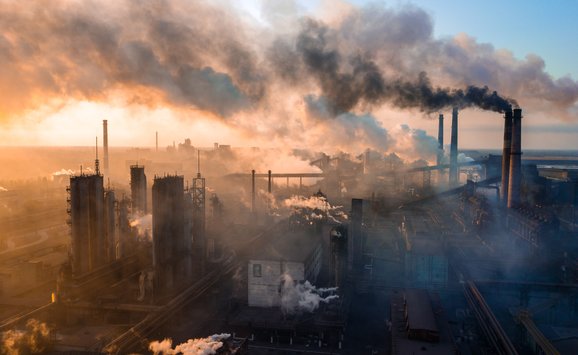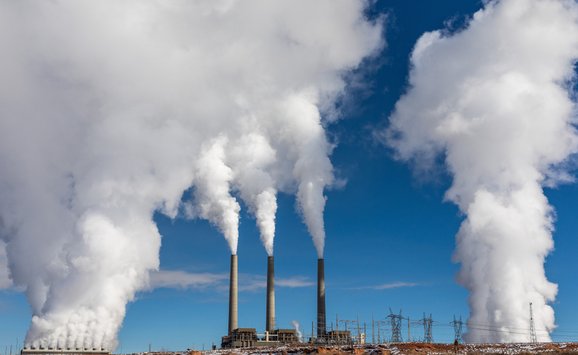Each week, we’re compiling the most relevant news stories from diverse sources online, connecting the latest environmental and energy economics research to global current events, real-time public discourse, and policy decisions.
For this week’s edition of On the Issues, we reflect on major stories that have played out in the first half of the year. Below, we point to RFF research and other selections from the editorial team that can inform the conversation, upcoming policy, and important decisions related to these developments. We’ll be back next week with a regular edition.

Here are some questions we’re asking and addressing with our research chops this week:
With infrastructure negotiations ongoing, what major energy and environmental provisions will make it into the final bills?
This March, President Joe Biden released the American Jobs Plan, a $2-trillion framework for new federal investments in clean energy, infrastructure, and jobs. With the release of the American Families Plan the following month, Biden laid out his priorities for a massive infrastructure package and kicked off a continuing debate in Congress about what policies will feature in the final bills. Since Biden first made it clear that infrastructure would be a top priority for his administration, debate in Congress has shifted considerably, with bipartisan negotiations stalling proceedings and questions that remain about what provisions can pass through the Senate’s reconciliation procedure. Now, the Biden administration has converged around a two-step plan: First, enact a bipartisan infrastructure package. The Senate unveiled a draft of the bill earlier this week, which includes a budget of $1 trillion and largely focuses on conventional, physical infrastructure. Second, the administration aims to pass an ambitious and sweeping budget proposal, which includes additional clean energy provisions.
When Biden first unveiled the American Jobs Plan, ten RFF scholars contributed to a blog post with comments on key provisions of the plan and suggestions for additional policies that could be worthy of inclusion. Reflecting on provisions that recommend additional funds for research, development, and demonstration (RD&D) of new technologies, RFF’s Karen Palmer and Susan Tierney point to a recent report from the National Academies of Sciences, Engineering, and Medicine they coauthored, which recommends “at least a doubling of federally funded RD&D over the next decade.” Previewing the limited role of carbon pricing proposals in infrastructure negotiations, RFF’s Marc Hafstead and Michael Toman note that Biden’s plan “relies heavily on tax breaks and direct government spending,” but “the benefits of incentive-based approaches for reducing greenhouse gas emissions … have been clearly demonstrated in RFF research going back more than a quarter century.” RFF scholars have continued to track major provisions that could feature in future infrastructure packages: a recent series of issue briefs explores the Energy Infrastructure Act, which includes policies involving advanced energy technologies, wildfire management on federal lands, and plugging abandoned wells.
Related research and commentary:
As the Biden administration considers updates to the social cost of carbon, what recommendations can help the process?
This year, the Biden administration set out to update the social cost of carbon (SCC), an estimate of the economic damages from each additional ton of carbon pollution and “the one way you can uniformly incorporate the cost of climate change into decisions across all of government,” according to RFF’s Kevin Rennert. Biden has had his work cut out for him: The Trump administration had estimated an SCC of $1–$7 per ton and disbanded an Interagency Working Group that had been tasked with periodically updating the metric. In his first days in office, Biden reconvened that group, which has issued an interim estimate of $51 and plans to unveil a final SCC by January 2022. That final estimate, expected to be higher than previous administrations’ calculations, seems poised to invite legal backlash. Already, conservative state attorneys general have brought a lawsuit claiming that the Biden administration arbitrarily chose a low discount rate for its interim estimate and exceeded its authority by considering climate impacts beyond the United States.
A blog post earlier this year from RFF President and CEO Richard G. Newell and Senior Fellow Maureen Cropper reflects on how the Biden administration can orient the process of updating the SCC around scientific and regulatory best practices. Specifically, they describe methodological updates for estimating the SCC that they helped develop as co-chairs of a 2017 report from the National Academies of Sciences, Engineering, and Medicine. They contend that such updates can be implemented “over the next six to eight months,” giving the administration time to make the necessary adjustments before the January 2022 deadline. A more recent public comment from RFF scholars reiterates many of these points and recommends that the Interagency Working Group eventually develop a standardized process for updating the SCC every five years. A separate comment from RFF’s William Pizer looks at the Interagency Working Group’s process for deciding a discount rate and recommends that the administration harmonize its approach to the SCC and other benefit-cost analysis through a shadow price of capital approach.
Related research and commentary:

After more than a year of a global pandemic and volatile economy, what does the future of energy use look like?
Over the past year and a half, COVID-19 has infected nearly two hundred million people, strained government resources, and reshaped the global economy. Perhaps no sector experienced as much volatility as the energy sector. Especially in the early months of the pandemic, when lockdowns were ubiquitous across the globe, energy demand declined significantly, and oil prices briefly plunged into the negatives. But amid the public health and economic catastrophes, new lessons emerged for climate mitigation efforts. Emissions declined significantly with the onset of early social distancing orders, and renewable power last year contributed a record share of global energy production. Governments around the world passed stimulus packages with the dual goal of both recovering from the pandemic and boosting clean energy. But such trends could prove short-lived; the International Energy Agency concludes in a recent report that global electricity demand is rising more quickly than renewable energy capacity can be deployed.
This June, RFF released its annual Global Energy Outlook report, which standardizes projections of future energy use from a variety of data sources and points to future trends in global energy consumption. Some of these projections assume that few new climate policies will be implemented, while more ambitious scenarios show how energy use would shift if policymakers take steps to limit global temperature increases to below 1.5 or 2 degrees Celsius. “As parts of the world begin to recover from the COVID-19 pandemic, a fundamental shift in the global energy system is needed to avoid the worst impacts of climate change,” RFF’s Richard Newell, Daniel Raimi, Seth Villanueva, and Brian Prest lay out in the report’s introduction. For additional thoughts on how the coronavirus pandemic has reshaped energy use and demand, check out the variety of relevant episodes that Resources Radio has released since the first lockdown orders, which include discussions about how COVID-19 has impacted air quality, electricity demand, and oil markets.
Related research and commentary:

Electricity use is projected to increase—but by how much? This week’s #FactOfTheWeek explores the question.
Ernest Brillo / Unsplash
37–104 percent
While each scenario’s assumptions about future energy use differ, all scenarios examined in the Global Energy Outlook 2021 report expect global electricity use to increase, in the range of 37–104 percent above 2019 levels.








